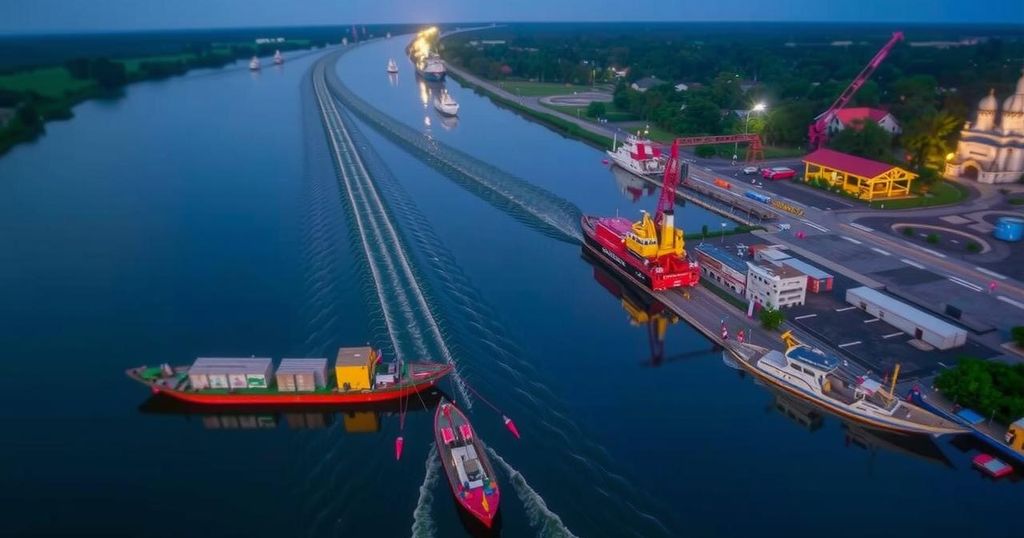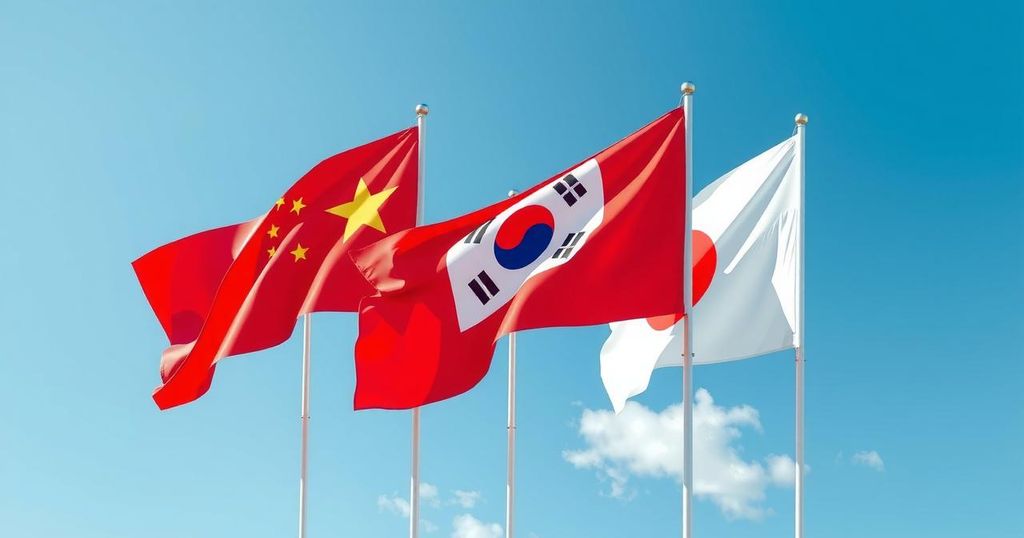Cambodia’s Funan Techo Canal Faces Uncertainty Amid Dwindling Chinese Support
The Funan Techo Canal in Cambodia, a significant infrastructure project aimed at enhancing the economy and reducing reliance on Vietnam, is facing uncertainty due to doubts about Chinese financial commitments. Initial pledges of 49% funding from China have not been confirmed, leading to concerns over the project’s future viability. The shift in Chinese investment, amid significant financial reductions, signals a complicated relationship that may affect Cambodia’s infrastructure ambitions and economic stability.
In August, Cambodia’s leader Hun Manet marked the groundbreaking of the Funan Techo Canal, a $1.7 billion project intended to significantly enhance the nation’s economy by providing a direct shipping route to the Gulf of Thailand. Hun Manet announced that China would contribute up to 49% of the funding, furthering Cambodia’s effort to reduce its reliance on Vietnam for shipping. However, recent reports indicate uncertainty regarding China’s actual financial commitment, with sources suggesting Beijing has expressed reservations about the project amidst escalating concerns over investment viability and environmental impacts.
Despite enthusiasm surrounding the groundbreaking, subsequent developments have raised significant doubts about the canal’s future. Chinese funding for Cambodia is projected to decline sharply, with disbursements anticipated to fall from over $420 million in 2021 to just $35 million by 2026. Reports reveal that no Chinese loans were made in the first half of the current year, highlighting a broader reduction in investments that could jeopardize key infrastructure projects like the canal.
As the canal’s construction appears to stall—months post-groundbreaking and with the site reportedly abandoned—concerns grow regarding the feasibility of this ambitious infrastructure undertaking. The shifting dynamics of Chinese investment in Cambodia, shaped by internal economic challenges and rising crime targeting Chinese nationals, complicate the outlook for the Funan Techo Canal project and underscore uncertainties in regional infrastructure development.
As a nation heavily indebted to China, Cambodia has been perceived as awash in Chinese influence following decades of rebuilding post-Khmer Rouge. However, stalled investments and shifting governmental priorities reveal a complex relationship that continues to evolve, ultimately impacting the future of Cambodian infrastructure and economic independence.
Experts assert that unless clarity and commitment from Chinese investors are restored, projects like the Funan Techo Canal may struggle to progress, leaving Cambodia’s aspirations for economic transformation in jeopardy.
The Funan Techo Canal was envisioned as a critical infrastructure project to bolster Cambodia’s economic landscape by providing a more efficient shipping route from the Mekong River to the Gulf of Thailand. The canal, evaluated at $1.7 billion, would enable the nation to lessen its dependency on Vietnamese ports for shipping operations. However, significant financial uncertainty surrounds the project due to shifting priorities within Chinese investment strategies and notable reductions in funding directed to Cambodia. This situation is exacerbated by ongoing challenges in Cambodia’s economic relations with China, traditionally viewed as a strategic ally. Furthermore, historical context indicates that Cambodia has grappled with substantial debt to China, complicating their economic dynamic.
In summary, the Funan Techo Canal project represents a pivotal endeavor for Cambodia’s economic aspirations, yet it is mired in financial uncertainty largely attributed to diminishing Chinese investment. As the once-promising collaboration between China and Cambodia evolves under new pressures, the canal’s future remains difficult to determine. Analysts emphasize that proactive measures must be taken to revive investor confidence if Cambodia hopes to achieve the infrastructural advancements essential for economic growth.
Original Source: www.usnews.com






Post Comment